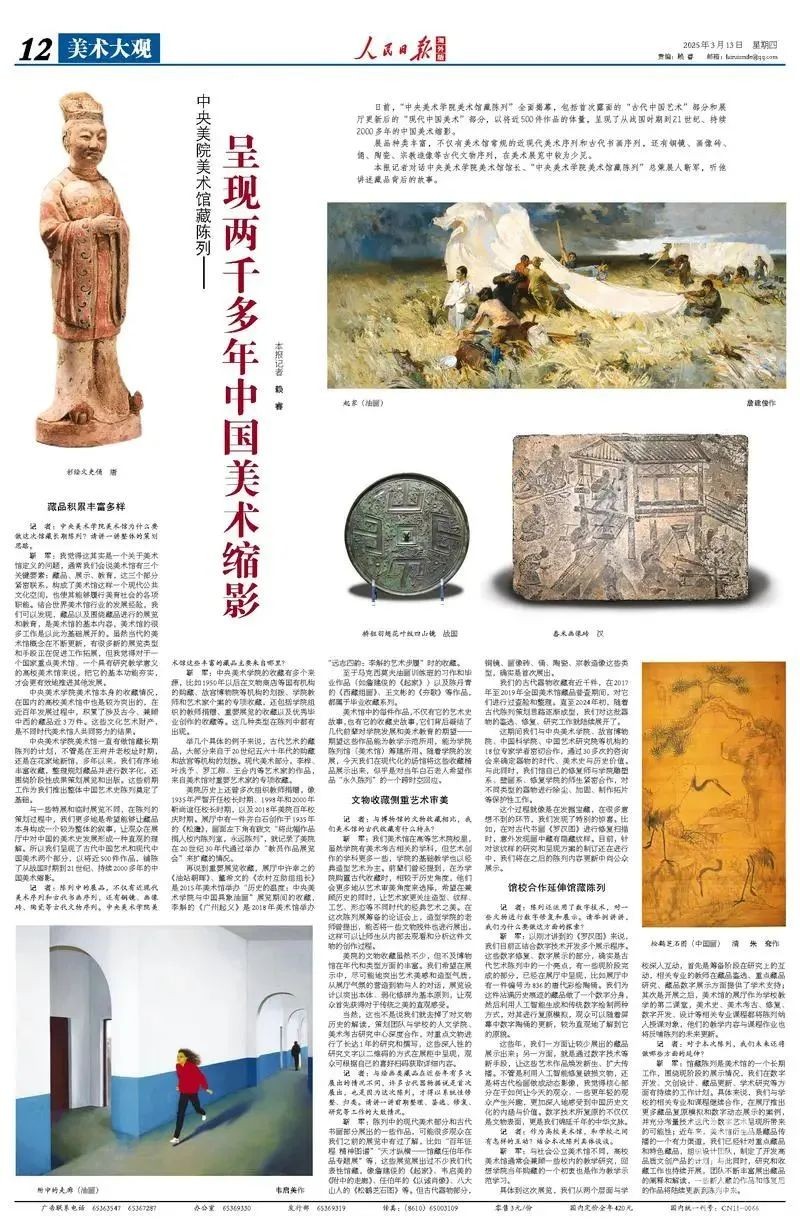

Editor's Note
On March 13, 2025, the People's Daily Overseas Edition published an article titled "Collection of CAFA Art Museum -- Presenting the Epitome of Chinese Fine Arts Spanning More Than Two Thousand Years". Jin Jun, the director of CAFA Art Museum and the chief curator of the "Collection of CAFA Art Museum", was interviewed by reporters and shared the stories behind the collections.
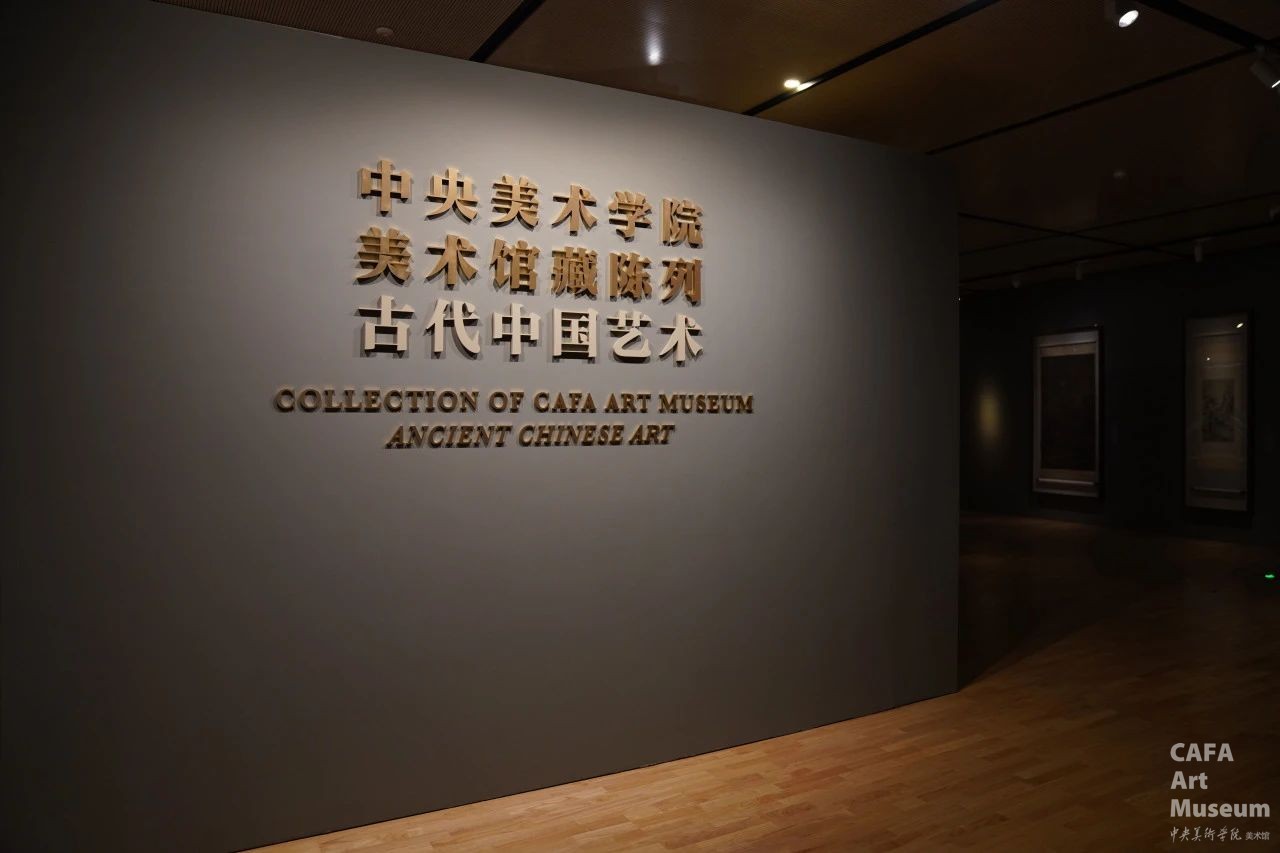
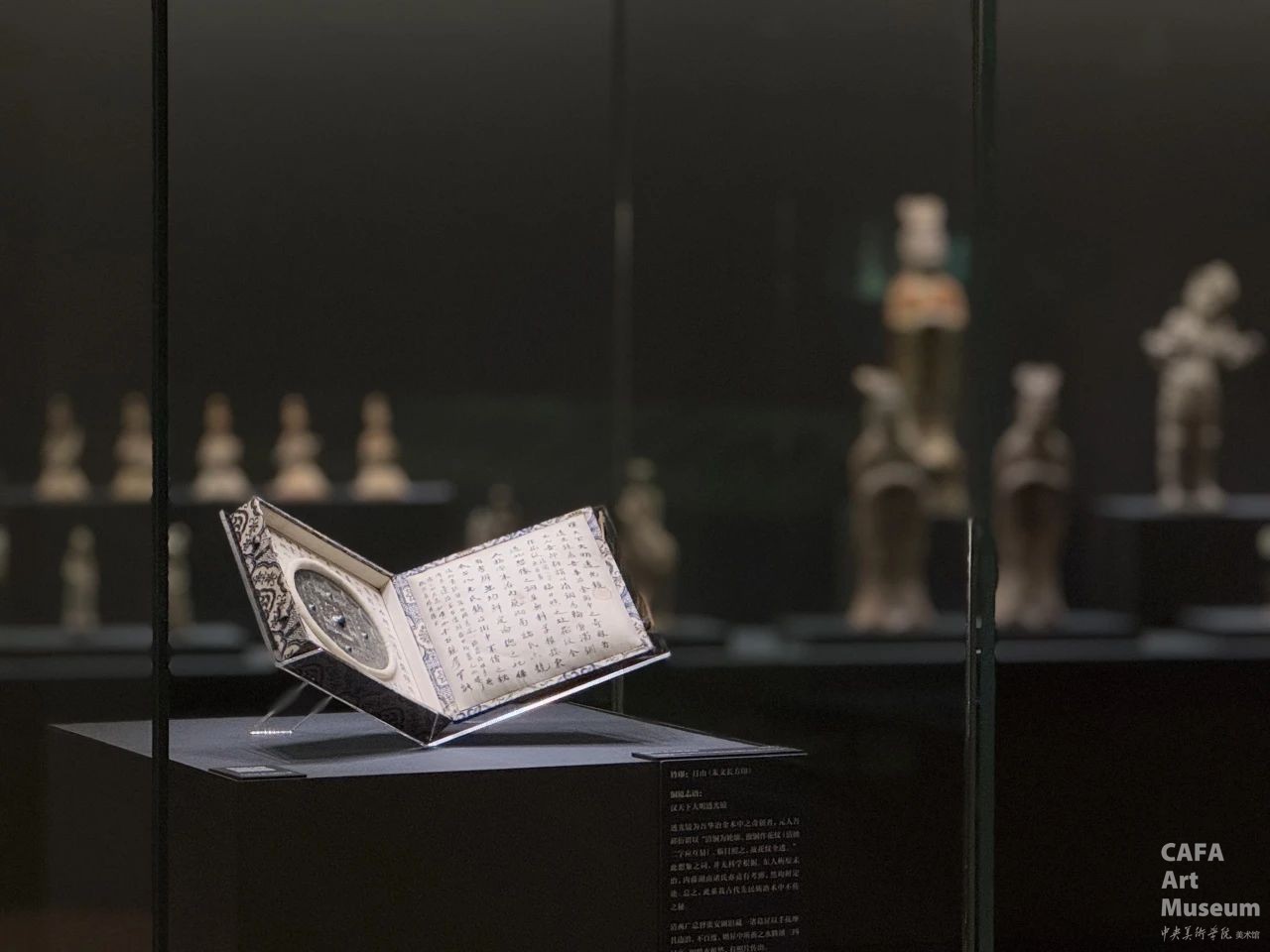
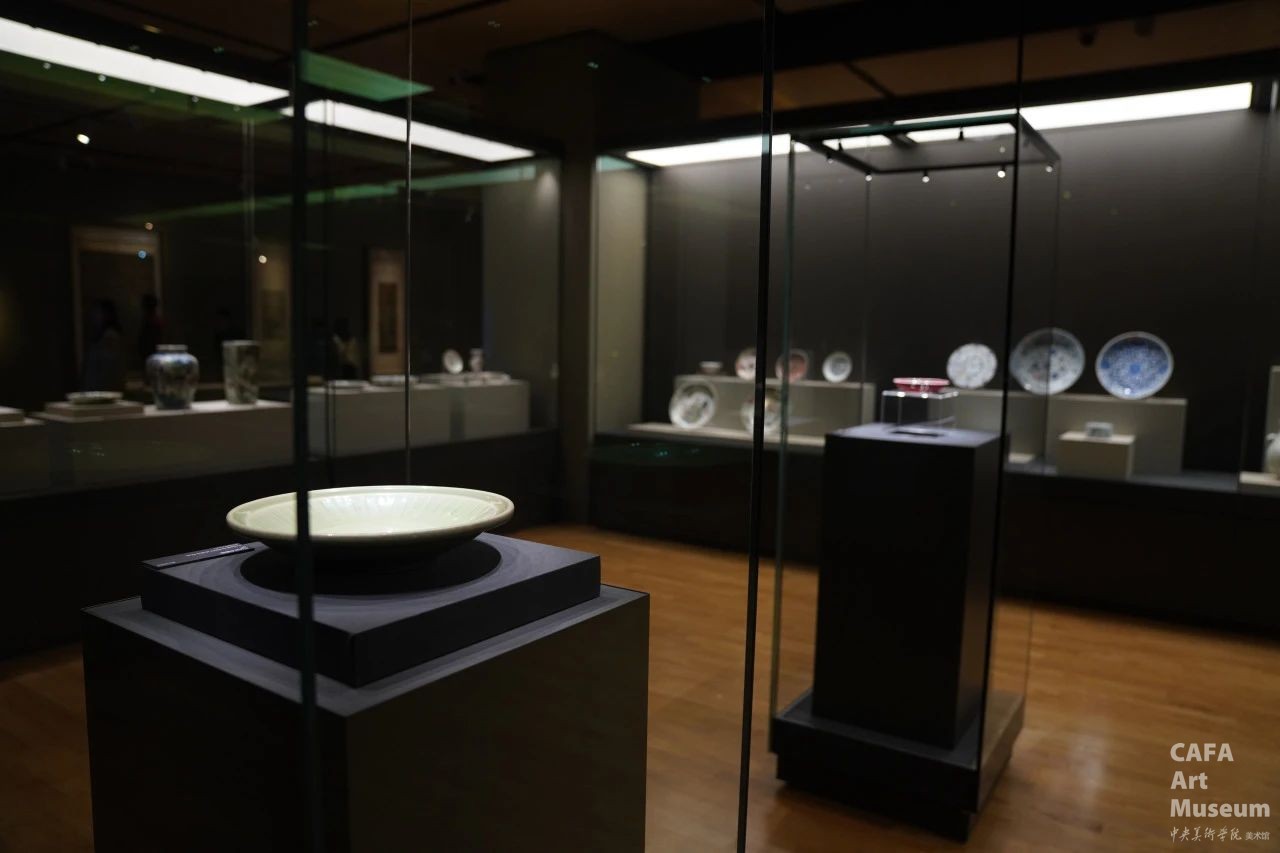
The Exhibition Site of "Collection of CAFA Art Museum -- Ancient Chinese Art"
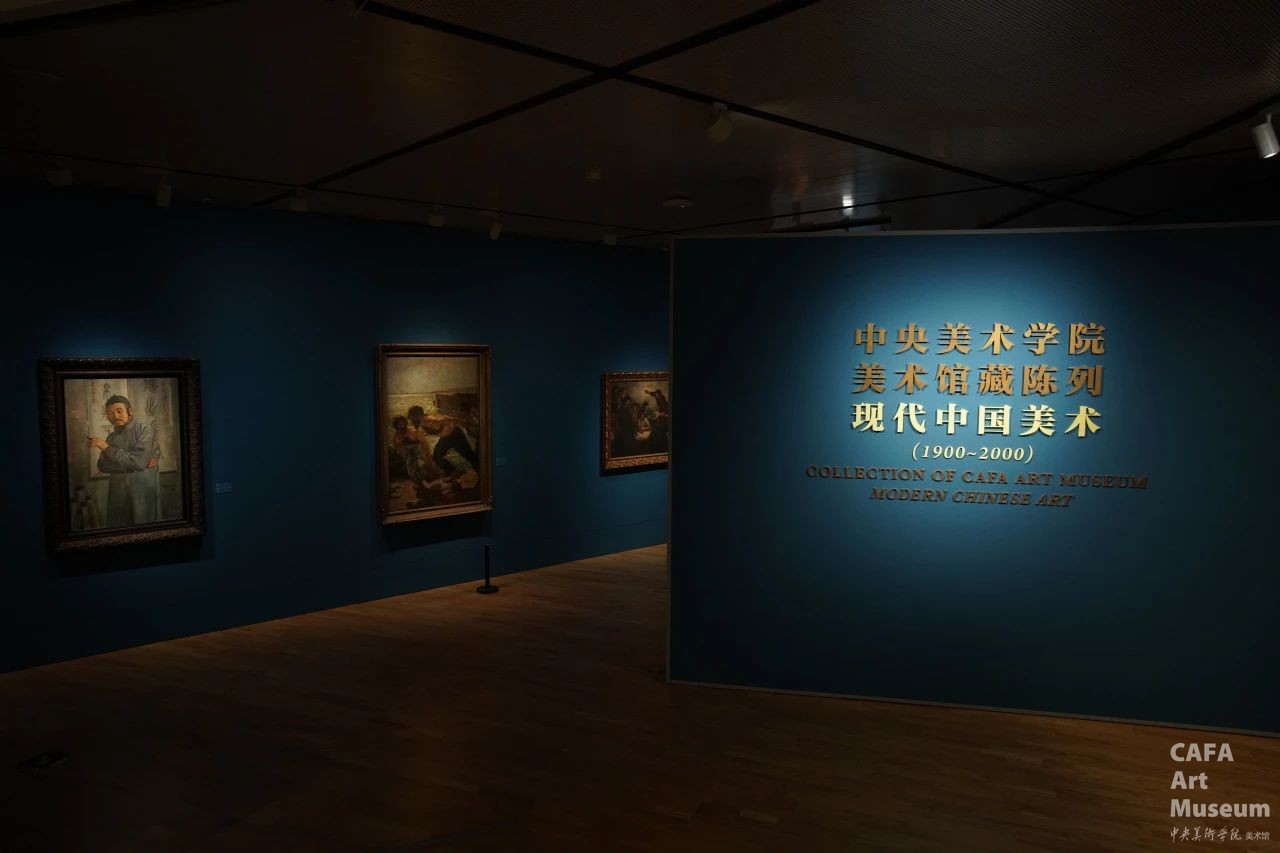

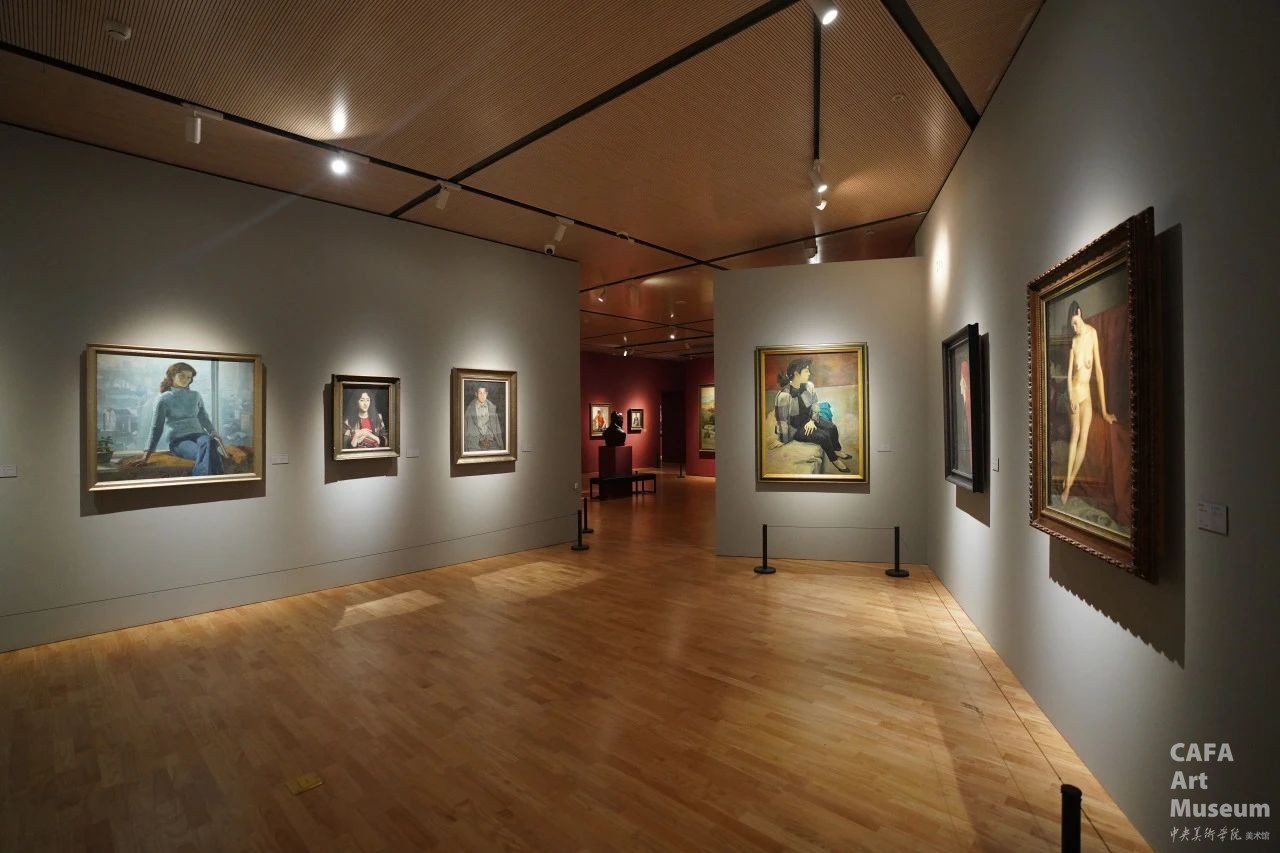
The Exhibition Site of "Collection of CAFA Art Museum—Modern Chinese Art"
Since the 1950s, the CAFA Art Museum has been continuously and systematically carrying out its collection work. At present, it has amassed more than 20,000 pieces of various collections. The collections are rich in variety, covering both ancient and modern works, taking into account both Chinese and Western art, and encompassing all fields of fine arts. In his reply letter to the senior experts and artists of the National Art Museum of China in 2023, General Secretary Xi Jinping emphasized the need to "make efforts in high-quality collection, high-level utilization, and high-quality service." The CAFA Art Museum has always attached great importance to the exploration, sorting out, and utilization of classic collections. A series of academic research, exhibition display, educational promotion, and international exchange activities have been carried out centered around the collections. The launch of this long-term exhibition is not only an important exploration by the museum of its classic collections and a phased summary of its collection and research work, but also a positive response to national cultural policies, and more importantly, a demonstration of the core values of the museum in the new era.
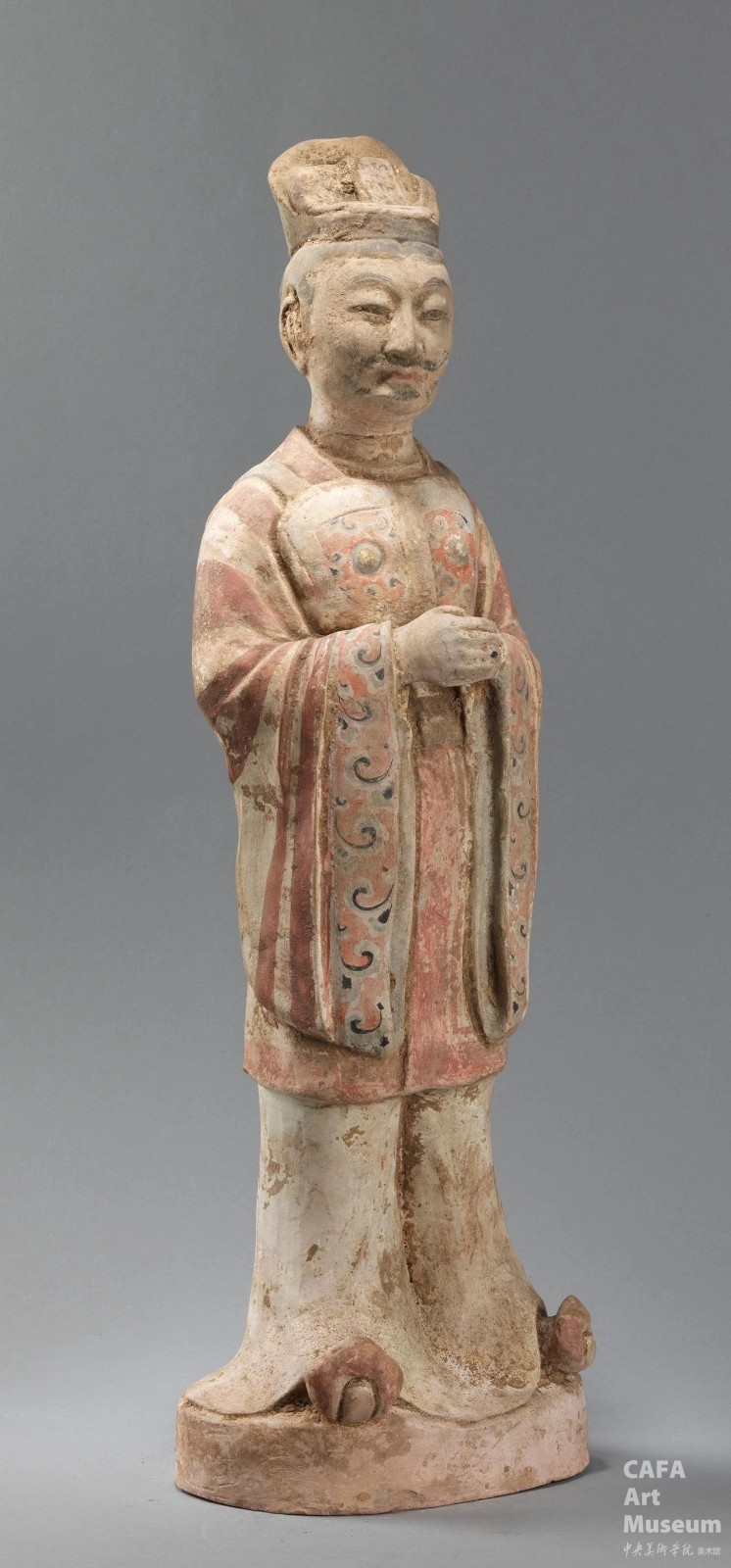
Painted Civil Official Figurine, Tang Dynasty, Length: 13.5 cm, Width: 22.5 cm, Height: 65.6 cm, Collected by CAFA Art Museum
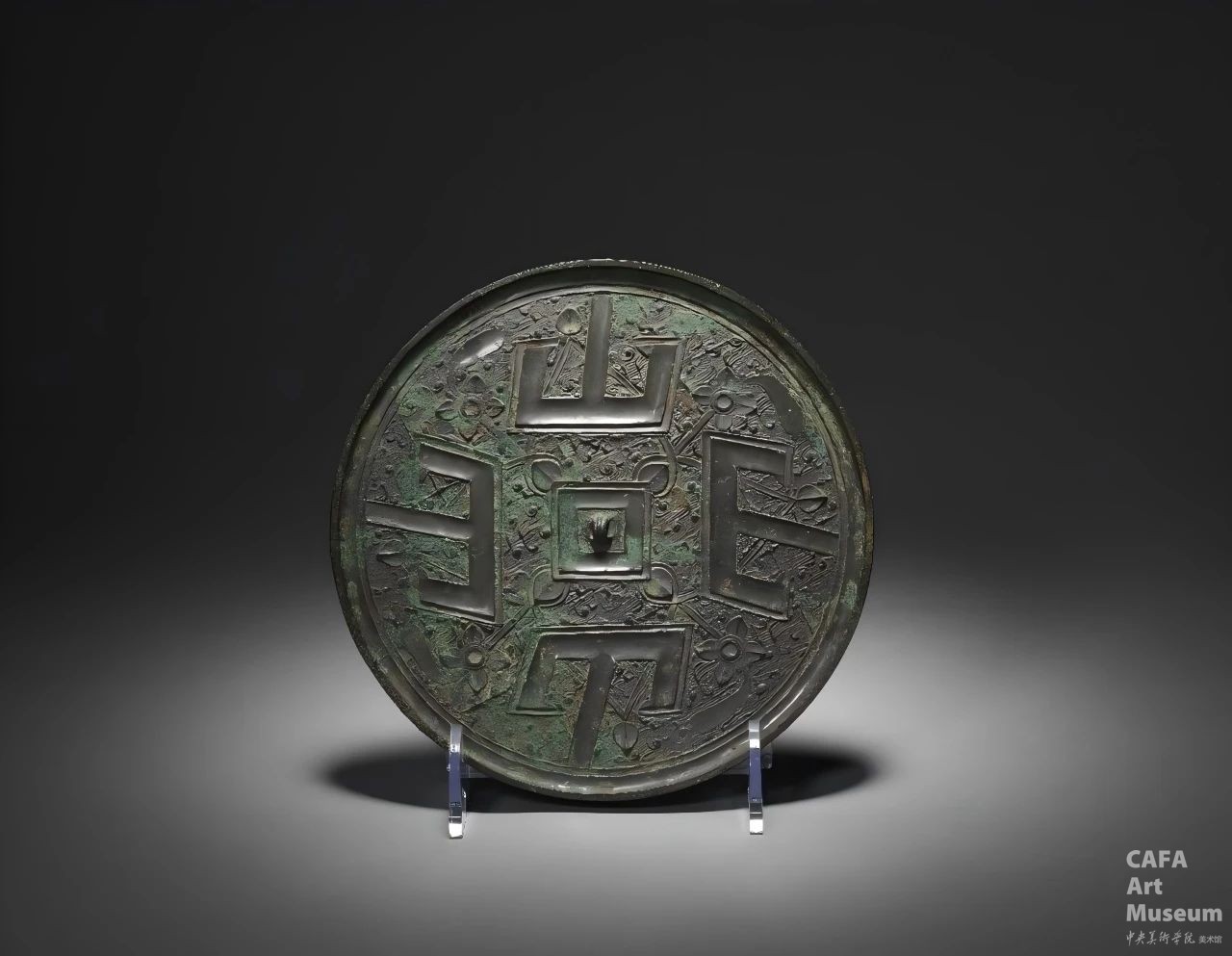
Four-Mountain Mirror with Bridge-shaped Knob and Patterns of Feathers, Wings, Flowers and Leaves, Warring States Period,
Diameter: 17.3 cm, Collected by CAFA Art Museum
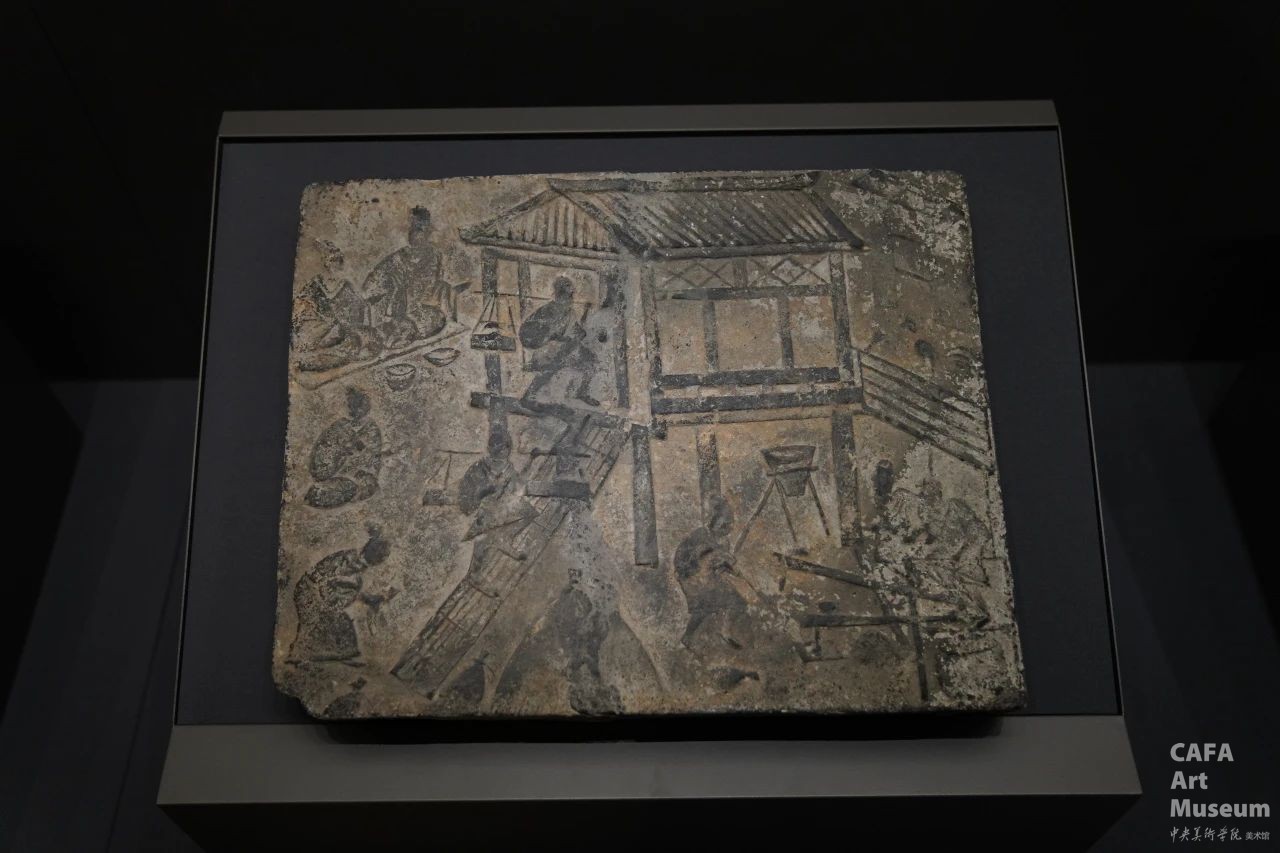
Pictorial Brick Depicting Rice Pounding, Han Dynasty, Length: 48 cm, Width: 38 cm, Thickness: 5.5 cm, Collected by CAFA Art Museum
CAFAM
————————— Accumulation of Collections —————————
rich and diverse
Reporter: Why did CAFAM decide to hold this long-term collection exhibition? Please talk about the overall planning concept.
Jin Jun: I think this is actually a question about the definition of an art museum. Usually, we would say that there are three key elements of an art museum: the collection, the exhibition, and the education. These three parts are closely linked and constitute the art museum as a modern public cultural space, enabling it to fulfill various functions of aesthetic education in society. By drawing on the development experience of the world's art museum industry, we can find that the collection, as well as the exhibitions and educational activities centered around it, are the basic contents of an art museum, and many of the art museum's tasks are carried out on this basis. Although the concept of contemporary art museums is constantly evolving, and there are many new exhibition types and means that are promoting the expansion of work, I believe that for a national key art museum and a university art museum with research and teaching significance, solidifying its basic functions will more effectively promote other aspects of development.
The collection of CAFA Art Museum is also quite outstanding among the art museums in domestic universities. During its development over nearly a hundred years, it has amassed nearly 30,000 pieces of collections that cover both ancient and modern times and incorporate elements from both China and the West. These cultural and artistic assets are the result of the joint efforts of those working in the art museum across different eras.
The CAFA Art Museum has always had a plan for a long-term exhibition of its collection. Whether during the period at the old campus site in Wangfujing or in the new museum at Huajiadi, over the years, we have systematically enriched the collection, sorted out and planned the collections, and digitized them. We have also planned exhibitions and publications around the phased achievements. These preliminary works have laid the foundation for us to launch the overall exhibition of Chinese art history.
Unlike some special exhibitions and temporary exhibitions, during the planning process of this display, we mainly hope that the collections themselves can form a relatively comprehensive narrative, enabling the audience to develop an intuitive understanding of the development of Chinese art history in the exhibition hall. Therefore, we have presented two parts: Ancient Chinese Art and Modern Chinese Fine Arts. With nearly 500 artworks, we have laid out a miniature of Chinese art that spans more than 2,000 years, from the Warring States Period to the 21st century.
Reporter: The exhibits in the display include not only the sequences of modern and contemporary fine arts and ancient Chinese calligraphy and paintings, but also sequences of ancient cultural relics such as bronze mirrors, pictorial bricks, and ceramics. Where do these rich collections of CAFA Art Museum mainly come from?
Jin Jun: The collections of the Central Academy of Fine Arts come from multiple sources. For example, since 1950, they include purchases from state-owned institutions such as cultural relics stores, allocations from institutions like the Palace Museum, special collections of individual cases of the college's teachers and artists. It also includes donations from teachers organized by the college, collections from important exhibitions, as well as collections of excellent graduation works, etc. All these types of collections are presented in the exhibition.
To give some specific examples, most of the collections of ancient artworks were acquired through purchases in the 1950s and 1960s and allocations from institutions such as the Palace Museum. In terms of the modern art section, the works of artists like Li Hua, Ye Qianyu, Luo Gongliu, and Wang Henei come from the art museum's special collections of important artists.
In the history of the Central Academy of Fine Arts, teachers have been organized to make donations on many occasions. For example, during the period when Yan Zhikai served as the president in 1935, during the terms when Jin Shangyi served as the president in 1998 and 2000, as well as during the centennial celebration of the Academy in 2018. There is a work titled "Pine and Eagle" created by Qi Baishi in 1935 in the exhibition hall. There is an inscription in the lower left corner of the painting that reads, "Donate this work to the school's exhibition room for permanent display." This inscription records the situation of the Central Academy of Fine Arts expanding its collection by holding the "Exhibition of Teachers' Works" in the 1930s.
Speaking of the collections from important exhibitions, Xu Xingzhi's "Morning Sunlight over the Gas Station" and Dong Xiwen's "The Head of the Rural Mutual Aid Team" in the exhibition hall were collected during the exhibition "The Temperature of History: The Central Academy of Fine Arts and Chinese Figurative Oil Painting" held by the art museum in 2015. Li Hu's "The Guangzhou Uprising" was collected during the exhibition "Great Aspirations and Four Rhymes: The Artistic Steps of Li Hu" held by the art museum in 2018.
As for the practice works and graduation works from the oil painting training class led by Maksimov (such as Zhan Jianjun's "Starting from Scratch"), as well as works like Chen Danqing's "Tibetan Series" and Wang Wenbin's "The Rammer's Song", they all belong to the graduation collection series.
Each work in the art museum has not only its own story in art history but also a story in its collection history. Behind these works, the hopes of several generations of predecessors for the development of the academy and art education are condensed – they hoped that these works could be used for teaching demonstrations and for the establishment of the academy's exhibition hall (art museum). With the development of the academy, today, as we display these fine collections in a modern venue, it seems to be a response across time and space to the hope of the elderly Qi Baishi in those days that his works would be "permanently exhibited".
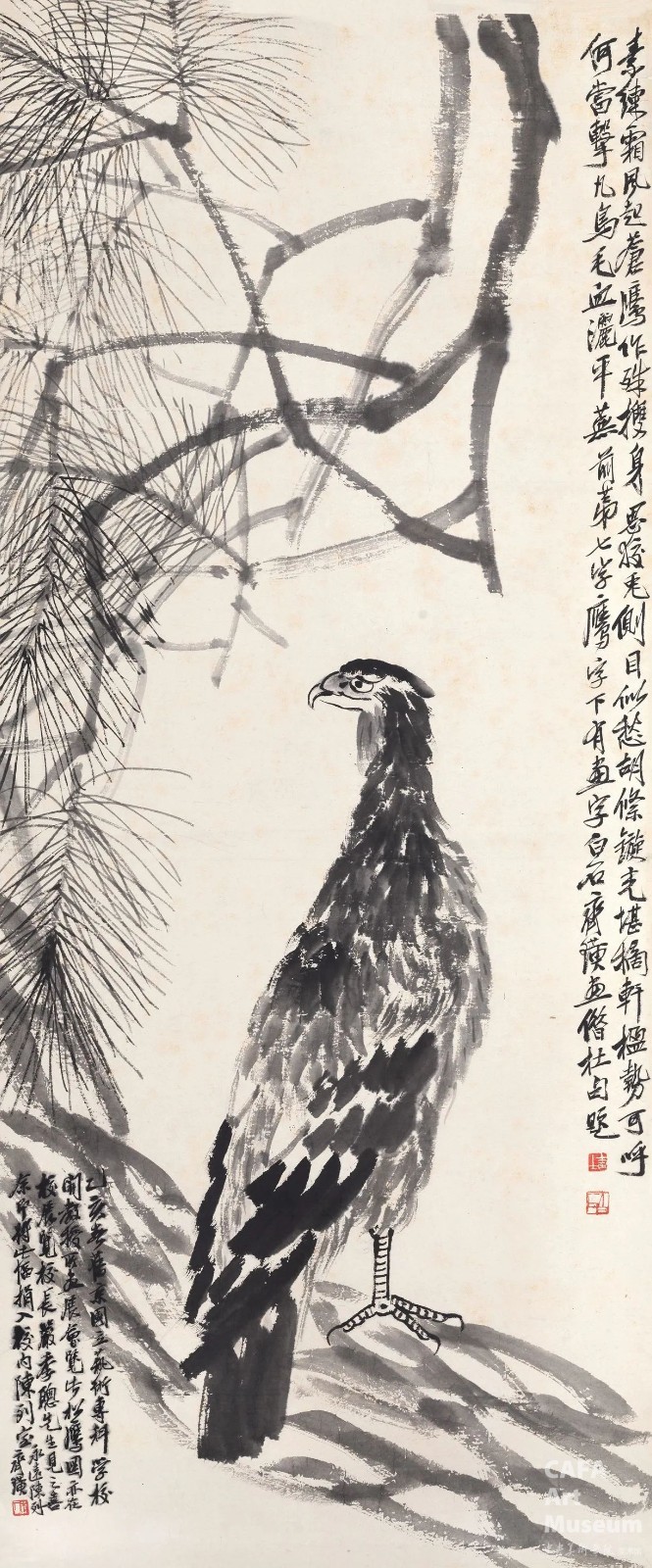
Eagle Perching on Pine Tree (Hanging Scroll), by Qi Baishi, 1935, ink on paper, 150x63cm, collected by CAFA Art Museum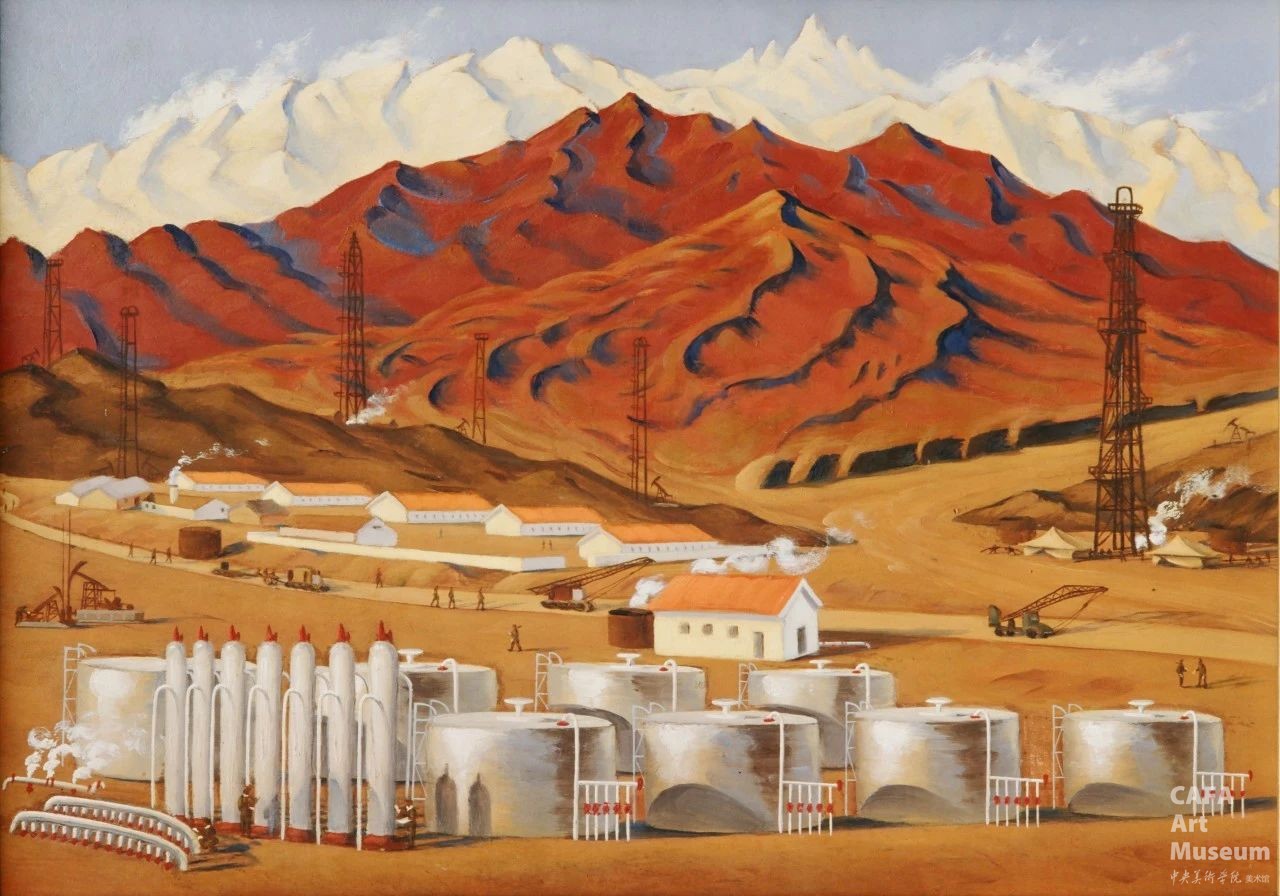
Morning Sunlight at the Gas Station, by Xu Xingzhi, 1962, oil on panel, 44×62cm, collected by CAFA Art Museum
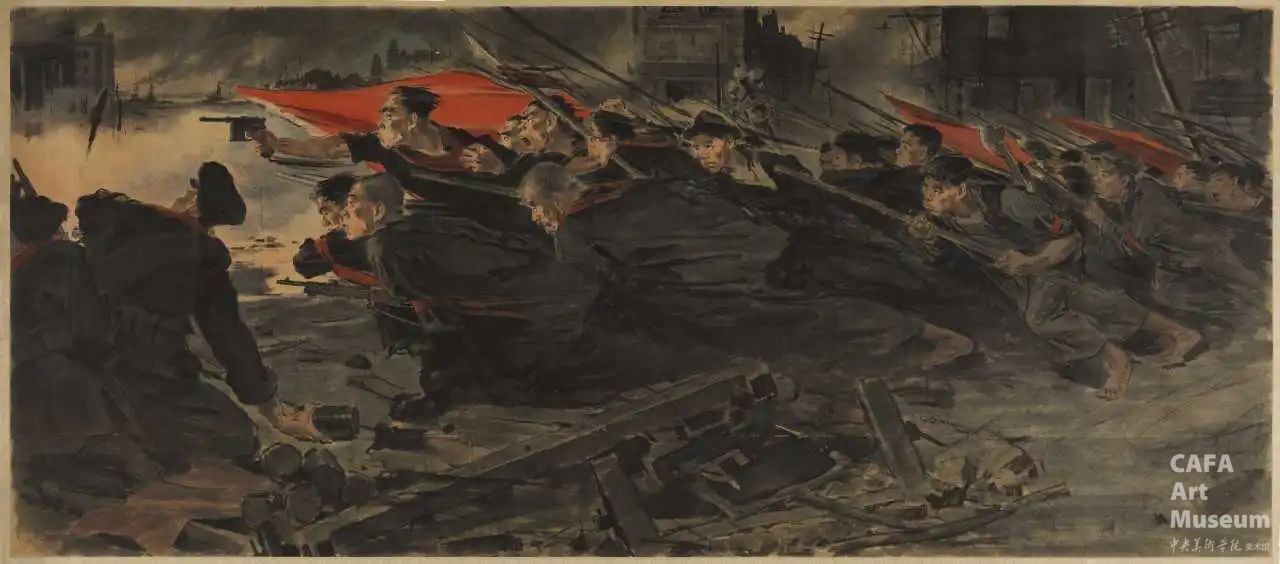
The Guangzhou Uprising, by Li Hu, 1959, ink and color on paper, 139×302 cm, collected by CAFA Art Museum
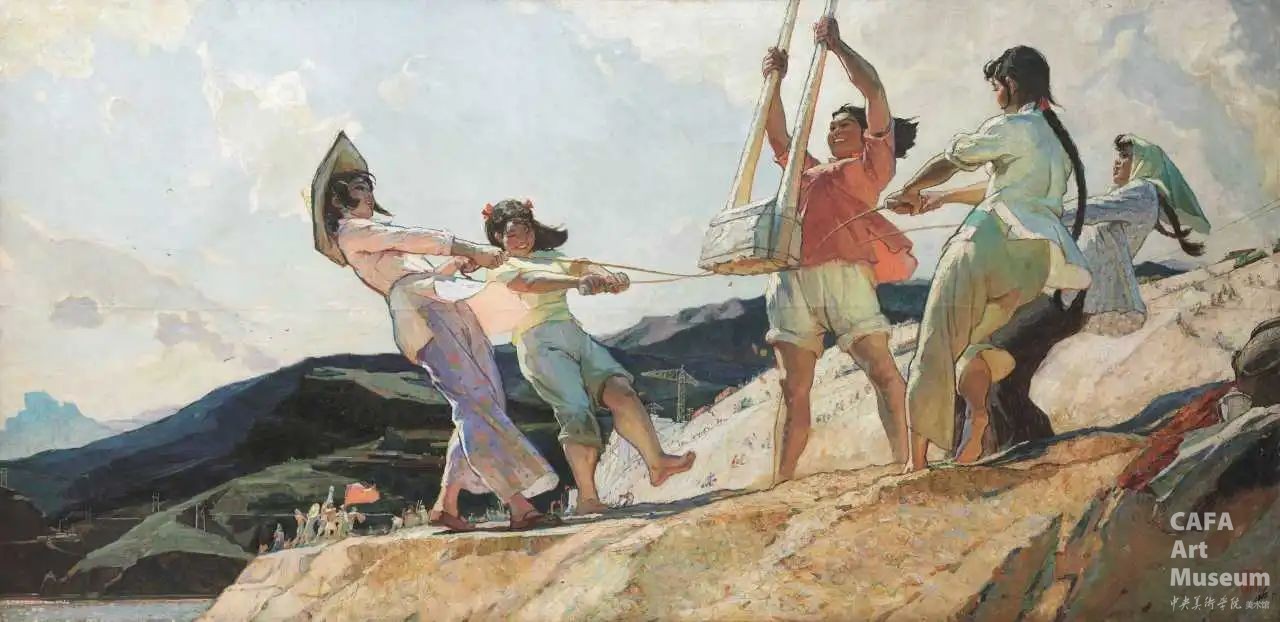
The Rammer's Song, by Wang Wenbin, 1962, oil on canvas, 156×320 cm, collected by CAFAArt Museum
CAFAM
—————————— Cultural Relics Collection —————————
Focus on artistic aesthetics
Reporter: Compared with the cultural relics collection in museums, what are the characteristics of the ancient collections in our art museum?
Jin Jun: Our art museum is located in a higher art institution. Although the college has disciplines related to art archaeology, there are more disciplines in art creation, and the basic teaching in the college mainly focuses on classic plastic arts. The predecessors once mentioned that when purchasing ancient collections for the college, compared with the historical perspective, they would choose more from the perspective of artistic aesthetics. They hope that while taking history into account, artists will pay more attention to the beauty of classic art in different eras, such as modeling, patterns, craftsmanship, and forms. At the demonstration meeting for the preparation of this exhibition, the teachers from the School of Plastic Arts once proposed whether some incomplete cultural relics could also be exhibited, so that teachers and students could view and analyze the creative process of these cultural relics from the inside.
Although our art academy has a considerable number of cultural relic collections, it is not as rich as museums in terms of time periods and types. We hope that in the exhibition, we can highlight the artistic beauty and modeling temperament as much as possible. From the creation of the exhibition hall atmosphere to the dialogue between the exhibits and the visitors, the basic principle of the exhibition design is to highlight the essence of the exhibits and weaken the rhetoric, so that the audience can first obtain an intuitive feeling of the beauty of tradition.
Of course, this doesn't mean that we have removed the interpretation of the history of cultural relics. The planning team has deeply cooperated with the School of Humanities and the Art Archaeology Research Center of the school, and has conducted research and writing on key cultural relics for up to one year. These in-depth research texts are presented in the display cases in the form of QR codes, and the audience can scan the codes to obtain detailed content according to their own preferences.
Reporter: Different from the situation where there have been multiple exhibitions of painting collections in recent years, many ancient artifacts are said to be exhibited for the first time. It is precisely because of this exhibition that they can be systematically renovated and classified. Could you please talk about the general situation of the previous work such as sorting, selection, restoration and research?
Jin Jun: Some of the works exhibited in the modern art section and the ancient calligraphy and painting section of this exhibition may already be familiar to many audiences from our previous exhibitions. For example, exhibitions like "The Centenary Journey: The Spiritual Map" and "Genius Unleashed — A Thematic Exhibition of Ren Bonian's Works in the Collection" have displayed many of our representative collections, such as Zhan Jianjun's "Starting from Scratch", Wei Qimei's "The Corridor of the Affiliated Middle School", Ren Bonian's "Portrait of Yicheng", and Zhu Da (Bada Shanren)'s "Painting of Pine, Crane, Ganoderma and Stone", etc. However, in the ancient artifacts section, types such as bronze mirrors, portrait bricks, figurines, ceramics, and religious statues are indeed being exhibited for the first time.
We have nearly a thousand pieces of ancient artifact collections. During the national census of art museum collections from 2017 to 2019, these artifacts were inspected and sorted out. Until the beginning of 2024, as the planning ideas for the ancient exhibition gradually took shape, our work on the selection, restoration, and research of these artifacts was carried out successively.
During this period, we closely cooperated with 18 experts and scholars from institutions such as the Central Academy of Fine Arts, the Palace Museum, the Chinese Academy of Sciences, and the Chinese National Academy of Arts. Through more than 30 consultation meetings, we determined the era, art history, and historical value of the artifacts. At the same time, our museum's own restorers worked closely with the teachers and students from the Sculpture Department, Mural Department, and Restoration College of the academy to carry out protective work such as dust removal, reinforcement, and making rubbings for different types of artifacts.
This process is like unearthing a treasure. In many unexpected aspects, we discovered special surprises. For example, when restoring and scanning the ancient painting and calligraphy work "Portrait of Arhats", we accidentally found hidden patterns in the painting. Currently, the research on this pattern and the formulation of the presentation plan are still in progress, and we will display it to the public in the future updates of the exhibition content.
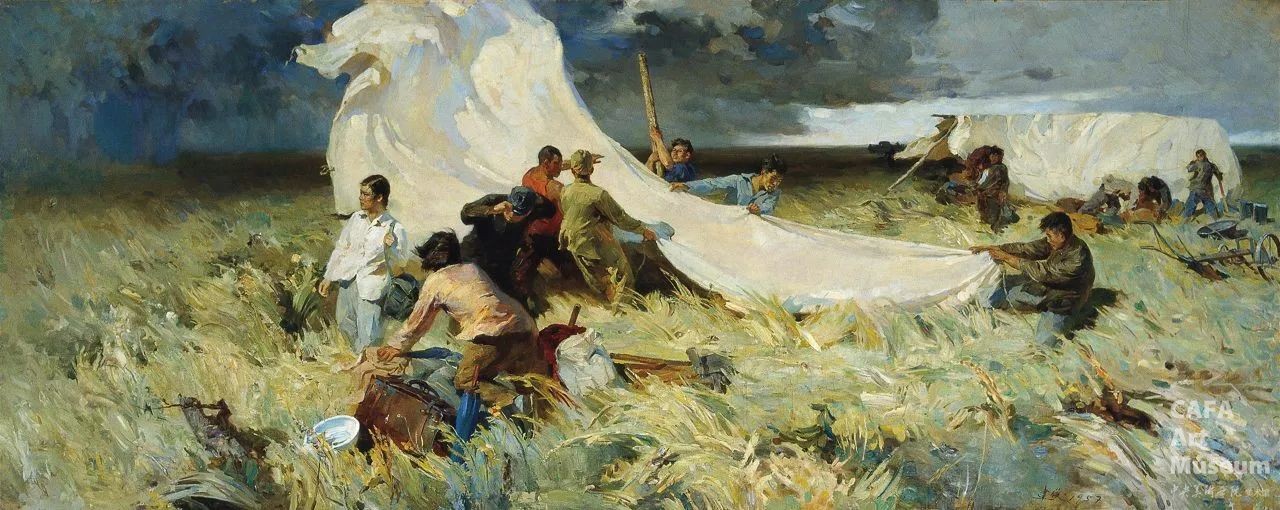
Starting from Scratch, by Zhan Jianjun, 1957, Oil on Canvas, 140×348 cm, Collected by CAFA Art Museum
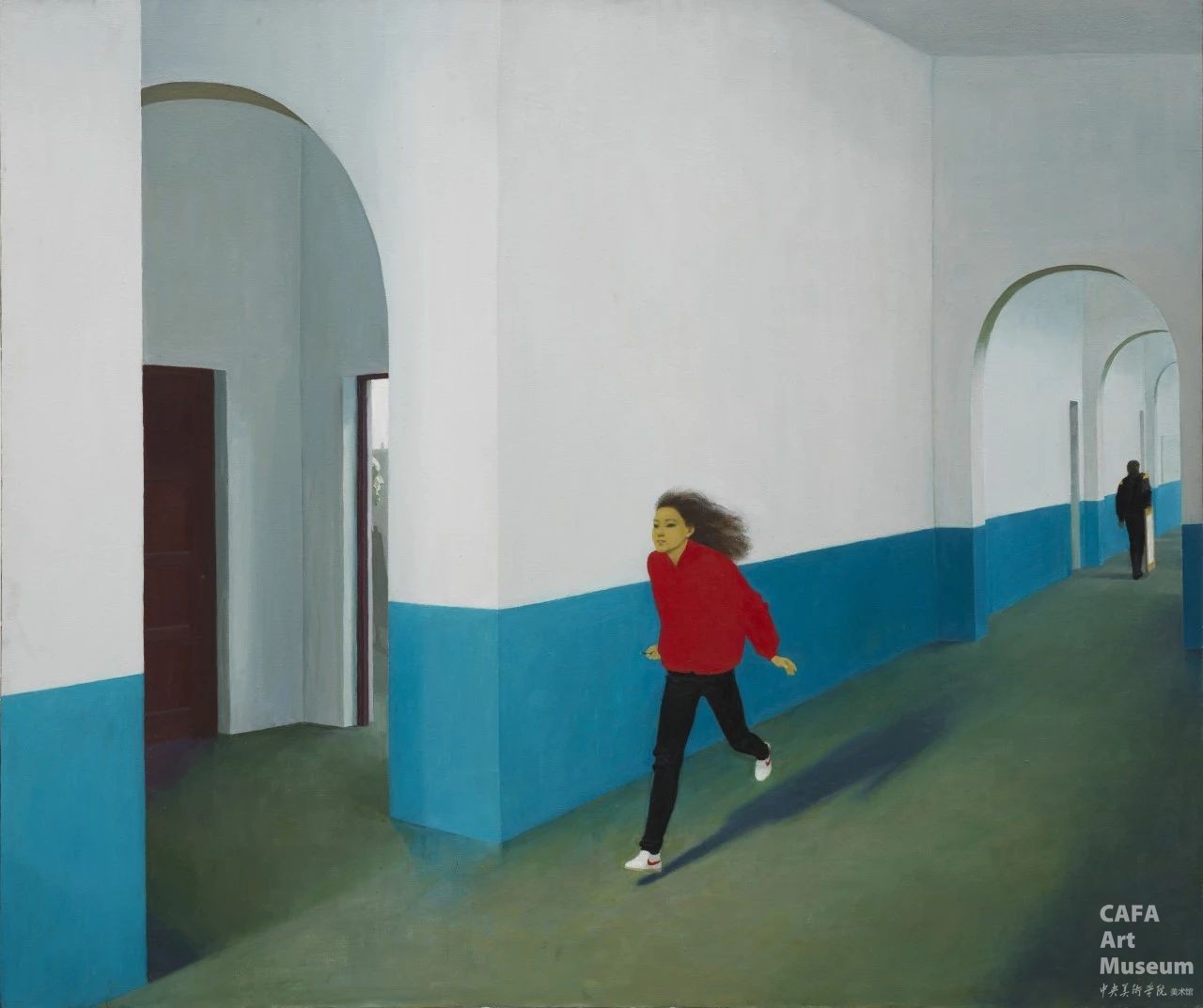
The Corridor of the Affiliated Middle School , by Wei Qimei, 1990, Oil on Canvas, 118x140 cm, Collected by CAFA Art Museum
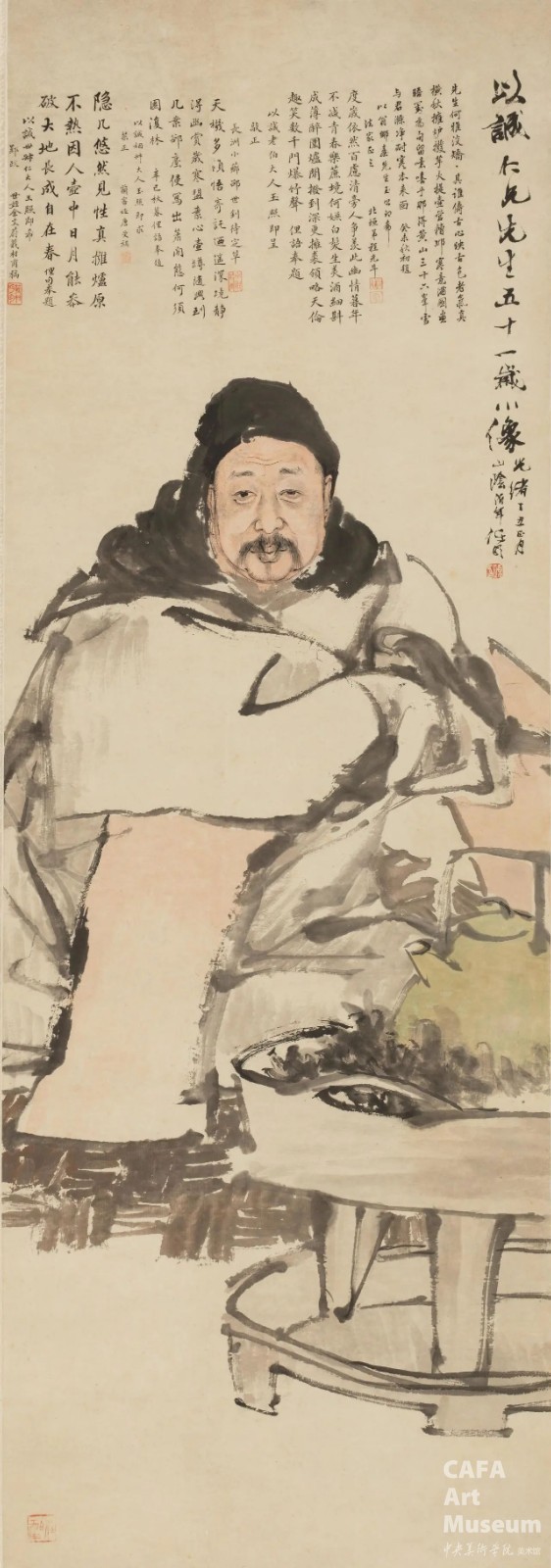
Portrait of Yicheng, by Ren Bonian. Colored ink on paper. Painted in 1877. Vertical length: 102 cm. Horizontal width: 45 cm. Collected by CAFA Art Museum
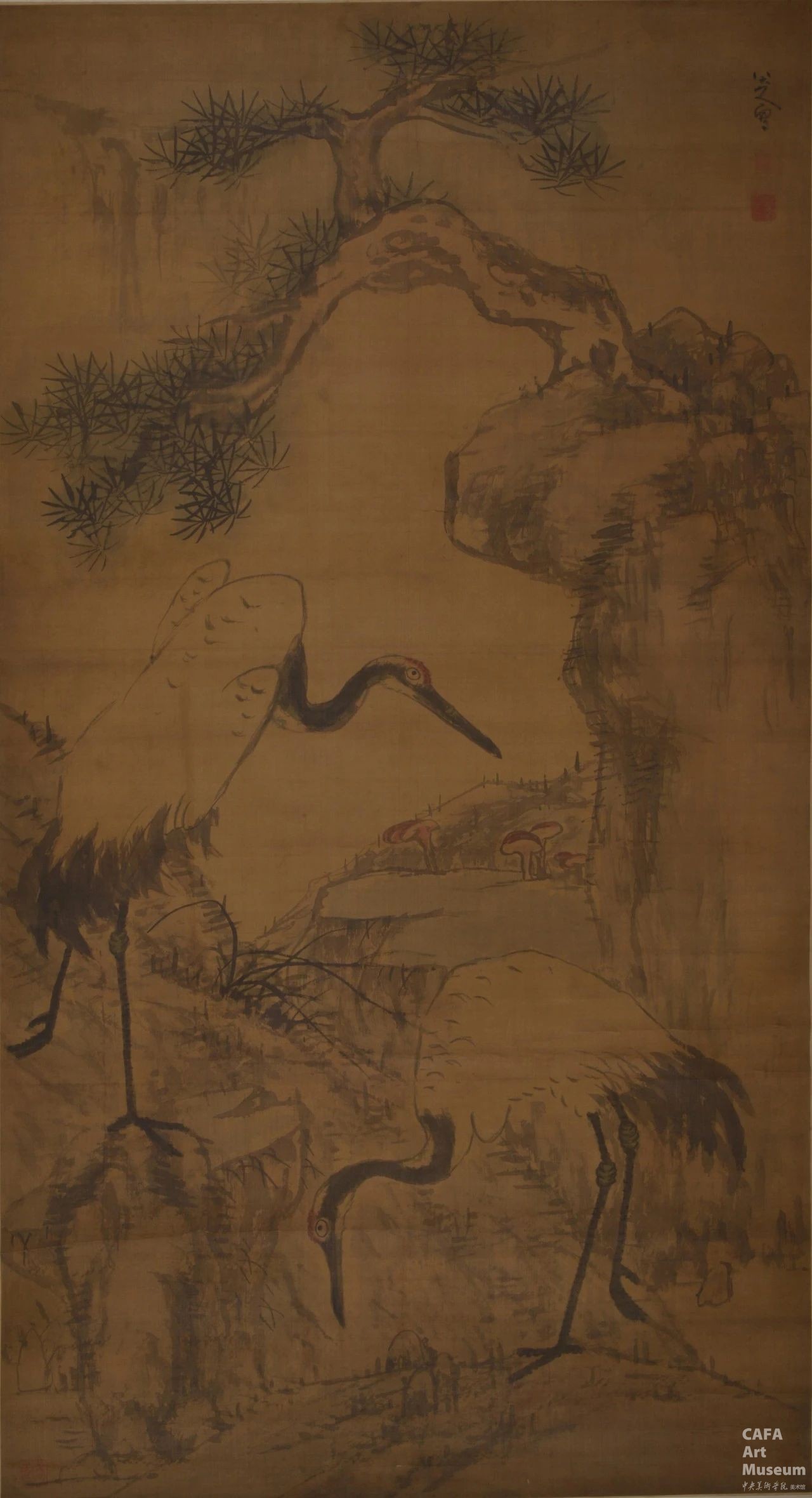
Painting of Pine, Crane, Ganoderma and Stone" by Zhu Da (Bada Shanren). Color on silk. Qing Dynasty. Vertical dimension: 188 cm.
Horizontal dimension: 102 cm. Collected by CAFA Art Museum.
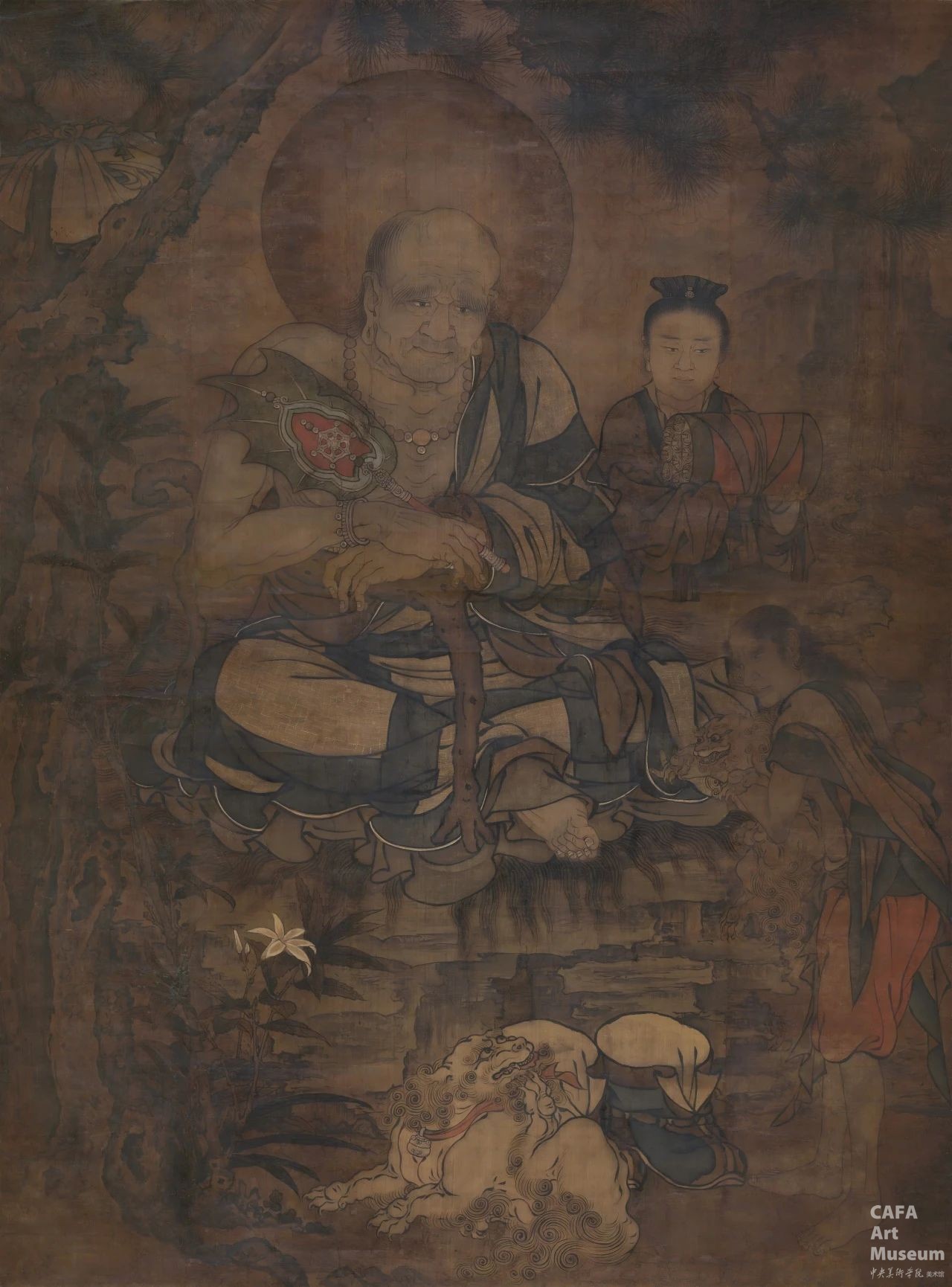
Portrait of Arhats, Anonymous artist, Color on silk, Yuan Dynasty, Vertical dimension: 154 cm
Horizontal dimension: 114.5 cm, Collected by CAFAM
CAFAM
————————— Cooperation between the Museum and the School —————————
Extend the Display of Museum Collections
Reporter: Digital technology has also been applied in the exhibition to conduct digital restoration and display of some cultural relics. Could you please give an example to explain why we need to carry out such exploration in this regard?
Jin Jun: Taking the "Portrait of Arhats" mentioned just now as an example, we are currently developing multiple display programs in combination with digital technology. The parts of digital restoration and digital display are indeed a highlight in the exhibition of ancient art. Some parts that have been completed at the present stage have already been presented in the exhibition hall. For example, there is a painted ceramic figurine from the Tang Dynasty with the number 836 in the exhibition hall. We created a digital replica for this collection that is covered with historical traces, and then used two methods, artificial intelligence generation and traditional digital drawing, to simulate its restoration. The audience can intuitively understand its original appearance as the digital ceramic figurine on the screen is updated.
Over the years, on the one hand, we have made it possible for the collections that are rarely exhibited to be shown; on the other hand, we have used new means such as digital technology to breathe new life into these artworks and expand their dissemination. Whether it is using artificial intelligence to restore damaged cultural relics or making ancient paintings into dynamic images, I think the core lies in how to arouse the interest of today's audience, especially some younger audiences, and enable them to have a deeper understanding of the connotations and values of Chinese history and culture. What digital technology restores is not just the surface of cultural relics, but also our Chinese cultural heritage that has endured for thousands of years.
Reporter: As an art museum of a higher education institution, what kind of interaction is there between the museum and the school? Please talk about it specifically in combination with this exhibition.
Jin Jun: Different from public art museums in society, art museums in higher education institutions usually take into account some teaching and research within the school. Looking back, one of the original intentions of the college's purchase and collection of items was to serve as teaching demonstrations for learning.
Specifically regarding this exhibition, we have had in-depth interactions with the school at two levels. Firstly, during the preparation stage, there is interaction in research. Teachers from relevant majors have provided academic support in aspects such as the selection of collections, research on key collections, and digital display of collections. Secondly, after the exhibition is launched, the exhibition hall of the art museum serves as the second classroom for the school's teaching. Relevant professional courses such as art history, art archaeology, restoration, digital development, and design all include the exhibition in their teaching scope. Their teaching content and course assignments will also contribute to the future updates of the exhibition.
Reporter: What aspects will we further expand on in the future regarding this exhibition?
Jin Jun: The display of museum collections is a long-term task for the art museum. Based on the current exhibition situation, we have continuous work plans in aspects such as digital development, cultural and creative design, collection updates, and academic research. Specifically, we will continue to cooperate with relevant majors and courses of the school, and launch more cases of collection restoration simulation and digital dynamic display in the exhibition hall. We will also fully consider the possibilities brought by technological iterations to the presentation of digital art. In recent years, the derivatives of the art museum have become a powerful channel for the dissemination of collections. We have already organized a design team for key and characteristic collections and formulated a plan to develop high-quality cultural and creative products. At the same time, research and collection work will also continue. The team will continuously enrich the interpretation of the exhibited collections, and some newly acquired works and restored works will be gradually updated into the exhibition.
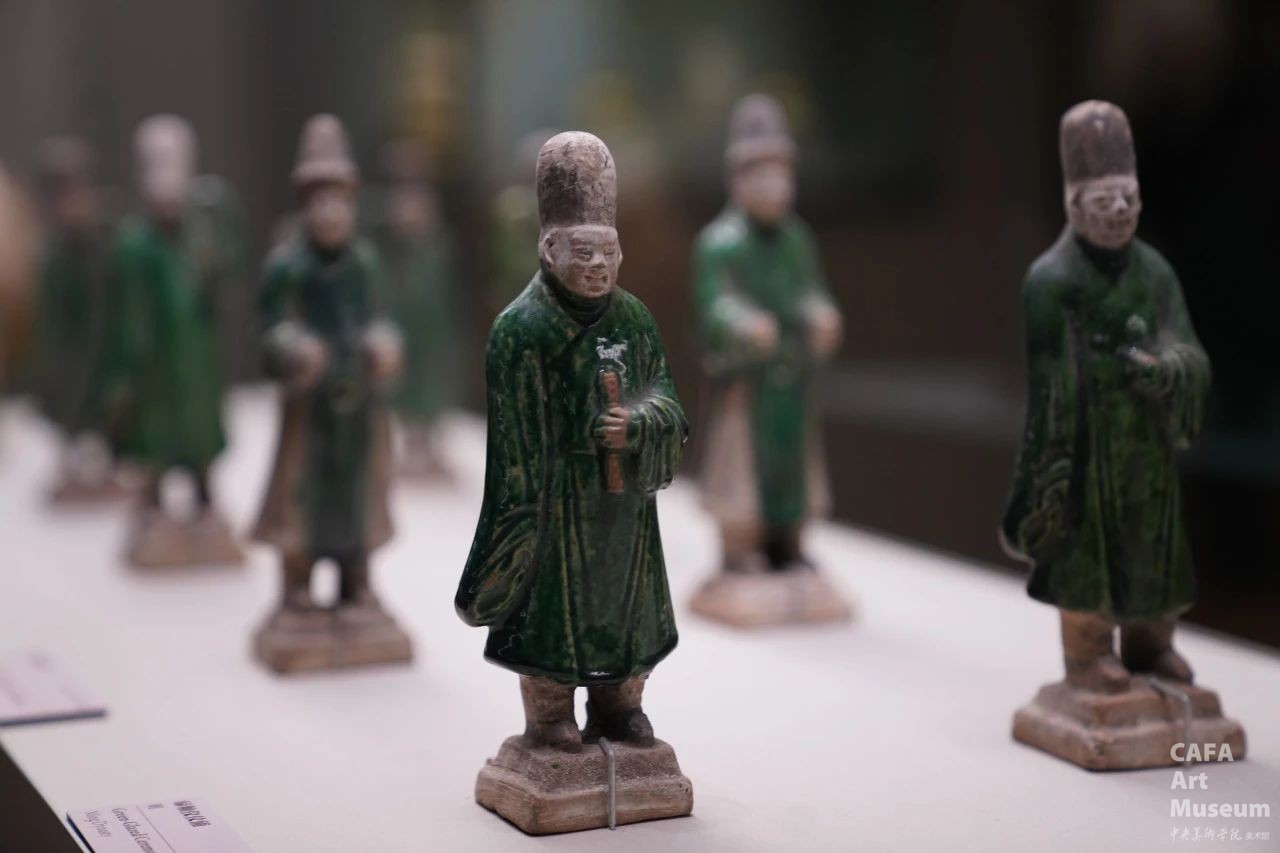
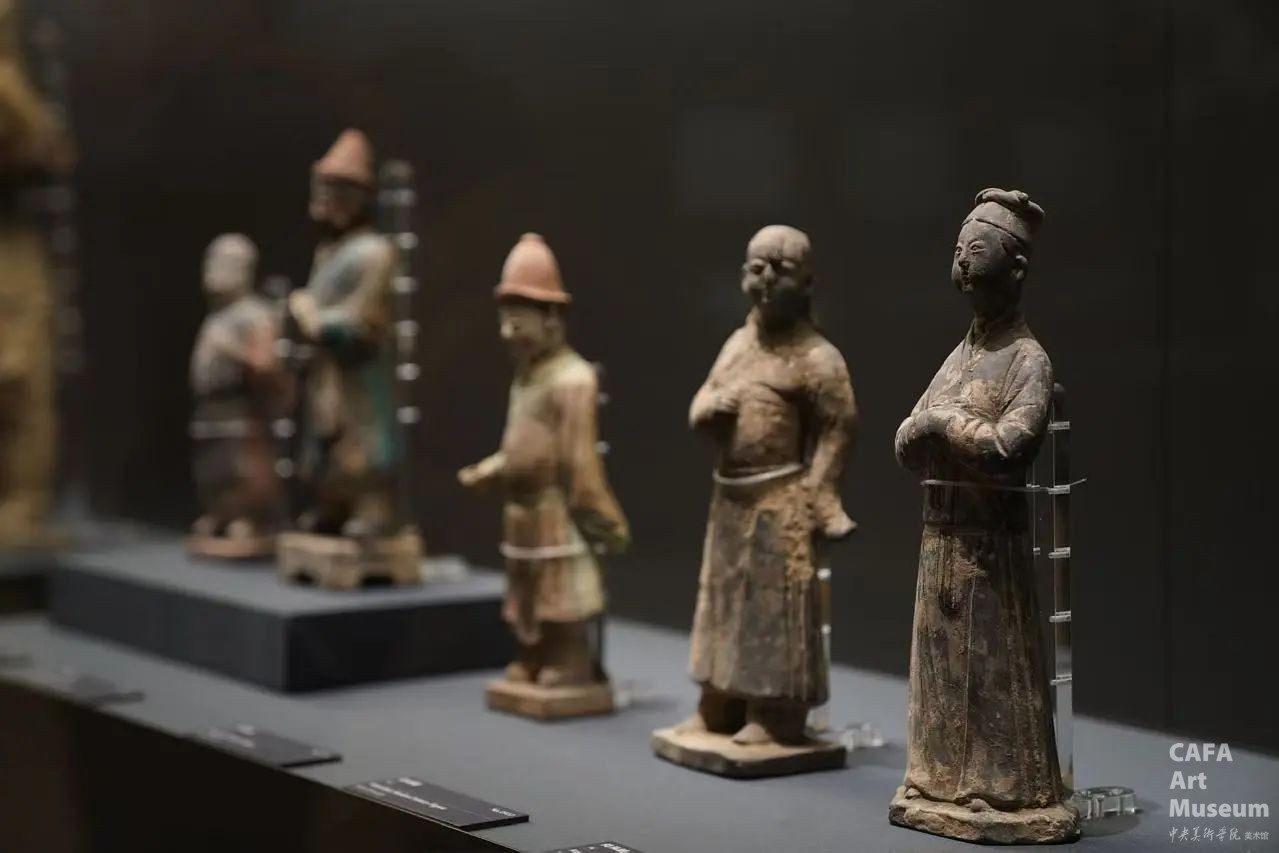
The Exhibition Site of "Collection Of CAFA ART Museum — Ancient Chinese Art"
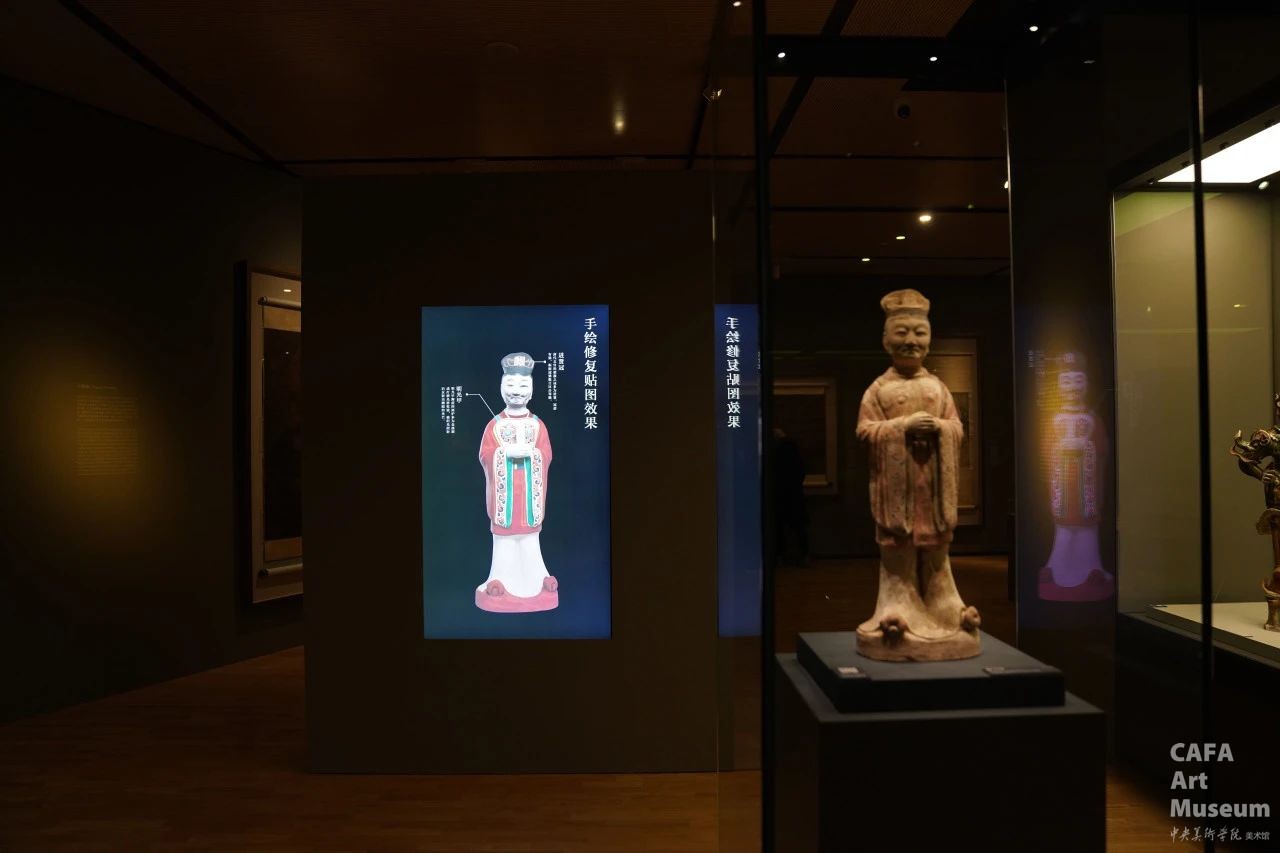

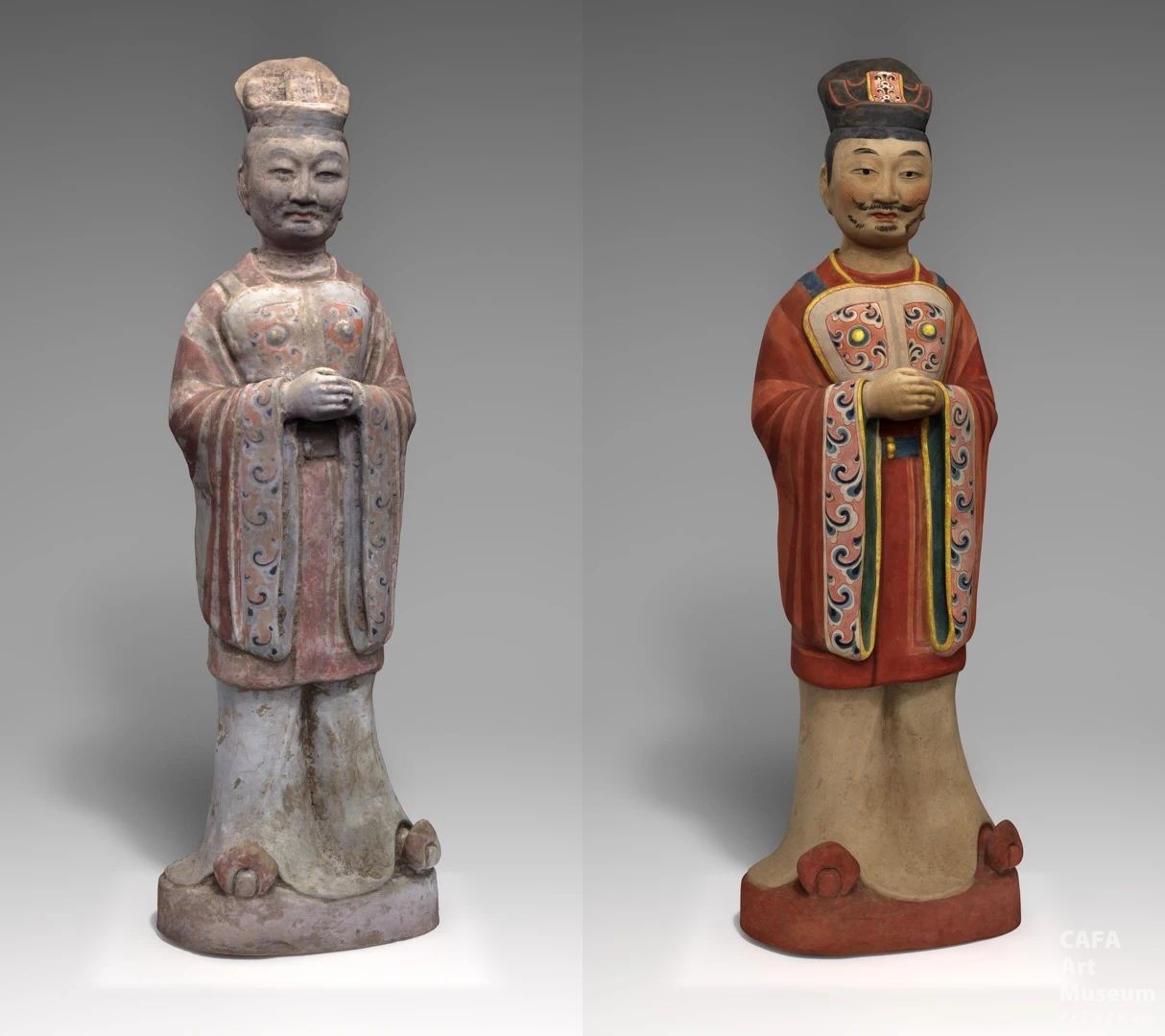
Demonstration Diagram of the Simulated Restoration of Cultural Relics
Reporter: By Lai Rui.
The original text was published on page 12 of the Overseas Edition of People's Daily on March 13, 2025.
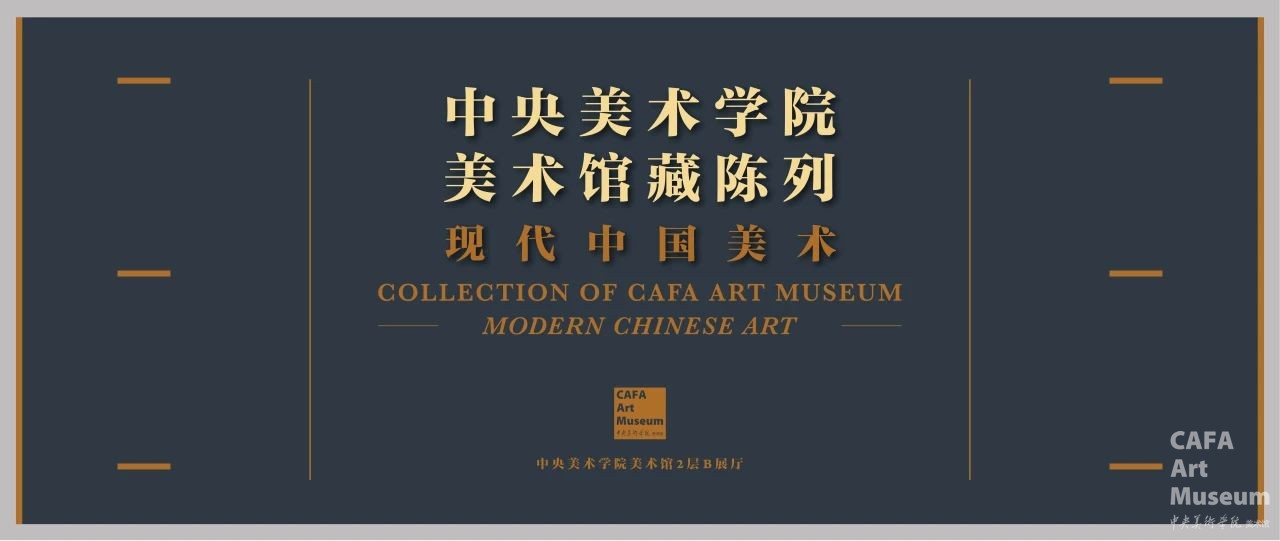
Collection Of CAFA Art Museum
——Modern Chinese Art
Exhibition Time: Starting from July 23, 2024
Exhibition Venue: 2B Gallery, CAFA Art Museum
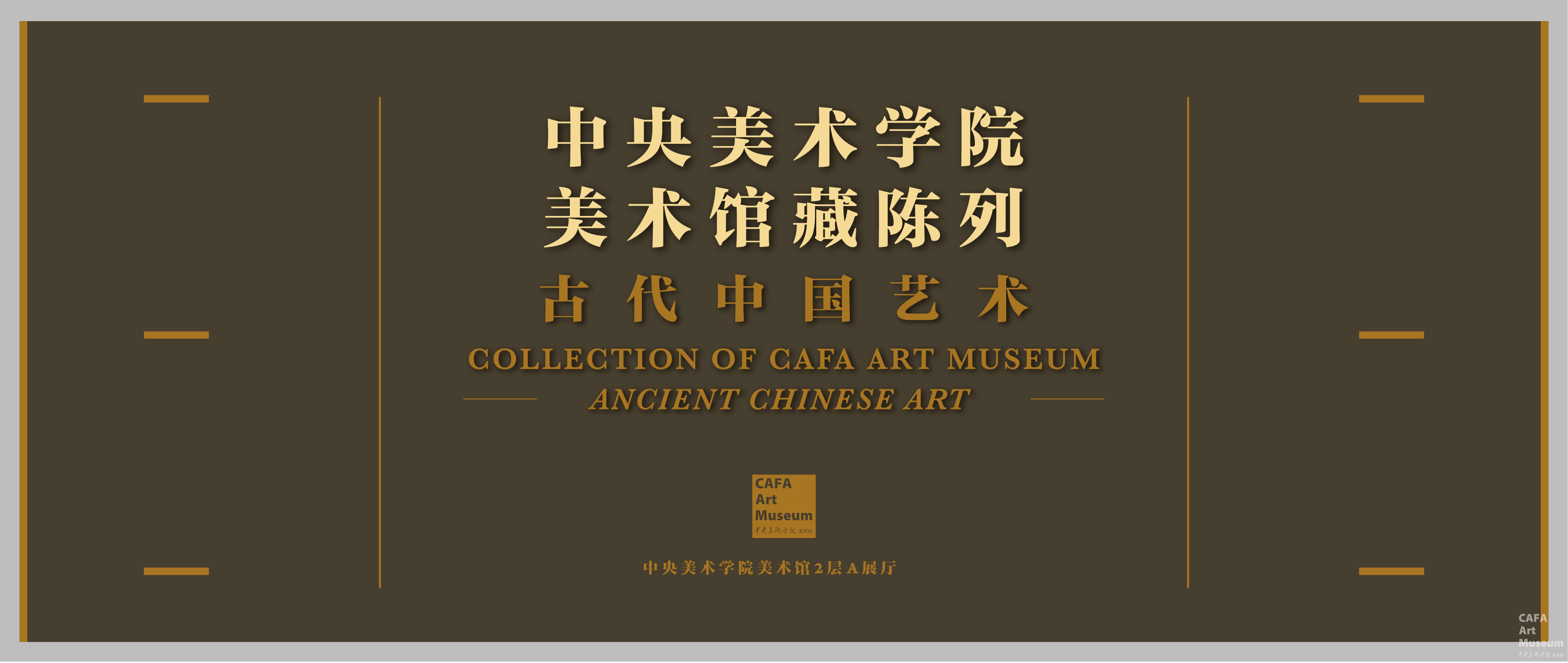
Collection Of CAFA Art Museum
——Ancient Chinese Art
Exhibition Time: Starting from January 21, 2025
Exhibition Venue: 2A Gallery, CAFA Art Museum
Editor-in-Chief / He Yisha
Editor / Duyinzhu
On-site Photos / He Yifei
